The 5 Best Nikon FM10 Lenses
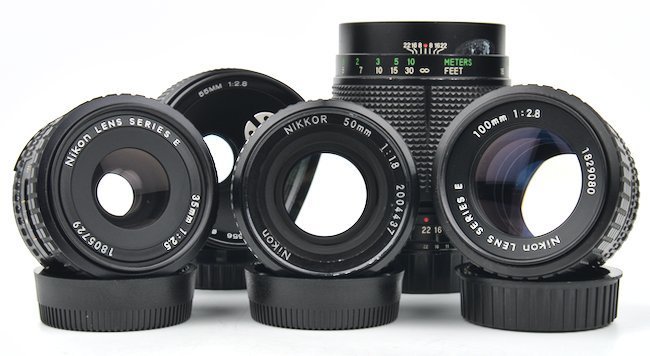
The Nikon FM10 is a great 35mm film SLR camera. This page will talk about the 5 best lenses for the Nikon FM10, as well as a few alternative lenses.
More information further down, but if you are limited on time, here is the list:
Affiliate Advertising Disclosure
Outside the Shot is a participant in the Amazon Services LLC Associates Program, an affiliate advertising program designed to provide a means for sites to earn advertising fees by advertising and linking to Amazon.com.
As an eBay Partner, I may be compensated if you make a purchase. I also participate in affiliate advertising programs with KEH and Adorama. More can be found on the Affiliate Discolsure page.
- Kit Lens - Nikon 50mm f/1.8 Series E
- Wide Angle Lens - Nikon Nikkor 24mm f/2.8 Ai
- Portrait Lens - Nikon 100mm f/2.8 Series E
- Zoom Lens - Vivitar Series 1 70-210mm f/3.5
- Macro Lens - Vivitar 90mm f/2.8
The top Nikon F-mount lenses are grouped by area of photography and value. There are a bunch of great camera lenses to choose from that are in price ranges ideal for the value of a FM10.
Standard Prime Lens
The 50mm lens is a very good choice for a wide variety of photography. The types of photography include street, everyday use, architecture, landscapes, portraits, and travel. This is the most popular focal length used on the Nikon FM10.
Nikon 50mm f/1.8 Series E
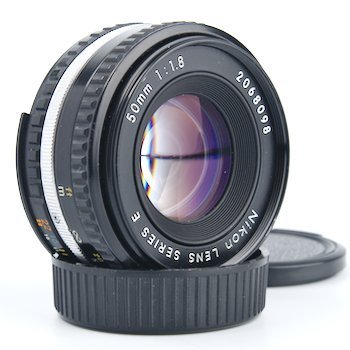
- One of the most popular 50mm lenses Nikon ever made.
- Excellent value.
- Small, light and compact.
- 52mm filter threads.
See current price and more information on:
If you do not already have one, a wonderful lens for the FM10 is the Nikon 50mm f/1.8 Series E. The 50mm f1.8 is really easy to find, has very good picture quality, is cheap, compact, and lightweight.
Make sure to get the second version of the lens, which has a chrome ring around the body. It is made of aluminum, whereas the first version is made from plastic.
The 50mm Series E lens is referred to as a pancake lens because it is thin. When mounted on the FM10 the lens will barely stick out. This is very handy for carrying the camera under a coat so you’re able to keep a low profile.
Lots of 50mm manual focus lenses were released by Nikon for the F-mount.
Nikon Nikkor 50mm f/1.4
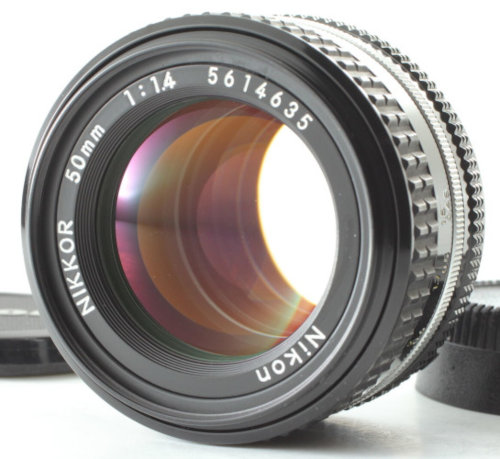
- Outstanding optics.
- Optical multi-coatings to reduce flare.
- Easy to find.
- Comparatively low-priced.
See current price and more information on:
At the additional cost of size and weight, the Nikon Nikkor 50mm f/1.4 is 2/3 of a stop faster. It is a little bit more expensive than any of the f/1.8 or f/2 50mm lenses.
Voigtländer Nokton 58mm f/1.4 SL II AI-S
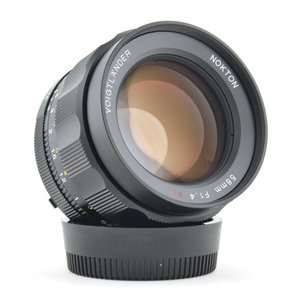
- Remarkable optics.
- Has a Meter Coupling Prong.
- CPU Contacts.
- Available for purchase new.
See current price and more information on:
Nikon built a 50mm f/1.2 and 55mm f/1.2, but the cost to performance is not there. Because of the age of the lenses, you ought to be concerned about the grease in the focusing helicoid drying up, ruining the experience of using the lens.
The Voightlander 58mm f/1.4 is all around a better choice for a top-of-the-line lens. It has the smoothest focusing ring| I’ve ever encountered on a manual focus lens. The lens is a total delight to use.
Plus, the lens provides compatibility across all F-mount cameras. The lens has a Meter Coupling Prong, Ai Meter Coupling Ridge, CPU contacts, and has a switch to enable electronic control of the aperture. You are able to switch the lens from a Nikon DSLR to a Nikon film SLR seamlessly.
Alternative Standard Lenses
Below are some other good lenses that are worth buying.
- Nikon Nikkor 50mm f/1.8
- Nikon Nikkor 50mm f/2
- Nikon 35mm f/2.5 Series E
- Nikon 28mm f/2.8 Series E
Wide Angle Lens
Nikon Nikkor 24mm f/2.8
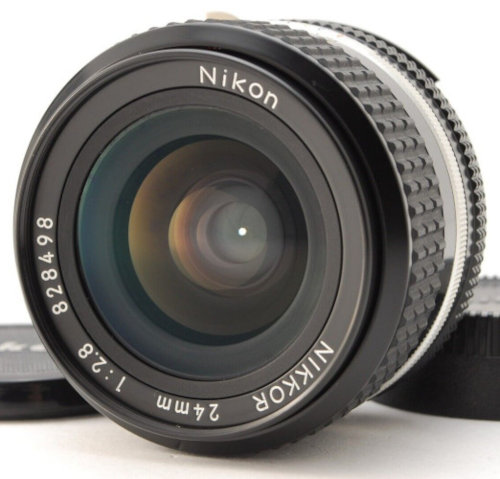
- Great combination with a 50mm lens.
- Optical multi-coatings to improve output.
- Easy to find.
- Relatively inexpensive.
See current price and more information on:
A very good selection for a wide-angle lens is the Nikon Nikkor 24mm f/2.8. It is ideal for architectural or landscape photography.
There are plenty of wider focal lengths to choose from, but they are either significantly more expensive or show noticeable amounts of barrel distortion. Third-party lenses have noticeably lower image quality than Nikkor lenses.
Nikon 28mm f/2.8 Series E
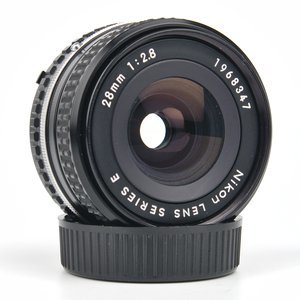
- Great when combined with a 50mm lens.
- Optical multi-coatings to reduce chromatic aberrations.
- Easy to find.
- Bargain-priced.
See current price and more information on:
The Nikon 28mm f/2.8 Series E lens is a less expensive alternative. It is attractive to use on the FM10 because of the affordable price and ease at which the lens can be found.
Alternative Wide Angle Lenses
In terms of price, the relationship is straightforward. The greater the field of view, the more expensive the lens will probably be. Larger apertures also go for considerably more.
- Nikon 8mm f/2.8 Fisheye
- Nikon Nikkor 15mm f/3.5
- Nikon Nikkon 18mm f/3.5
- Nikon Nikkon 24mm f/2
- Nikon Nikkon 13mm f/5.6
- Nikon Nikkon 16mm f/2.8 Fisheye
- Nikon Nikkon 20mm f/2.8
Portrait & Telephoto Lens
Nikon 100mm f/2.8 Series E Lens
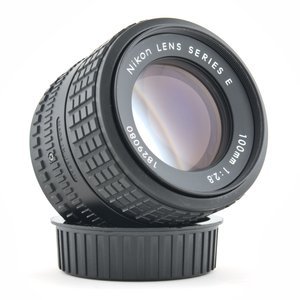
- 85mm substitute.
- Good value.
- Comparatively inexpensive.
- Widely available.
See current price and more information on:
The 85mm focal length wasn’t as commonly used as it is today in 1995 when the Nikon FM10 was originally released. 135mm or 100mm focal lengths were more widely used thanks to their more affordable price.
Like all the other Series E lenses mentioned, the 100mm f/2.8 hits a good balance of performance, functionality, and cost. That’s why it was sought after when released and why a lot of copies are offered on the used market.
Nikon Nikkor 135mm f/2.8 Lens
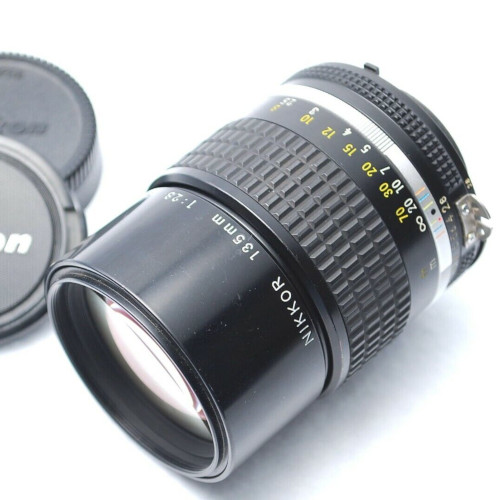
- 85mm alternative.
- "Classic" portraiture rendering.
- Easy to find.
See current price and more information on:
The “vintage” look of the Nikkor 135mm f/2.8 comes from the focal length combined with the lens only containing 4 elements.
1965 was when the initial version of the lens was introduced. There’s a total of 6 versions of the lens, with only the last two being suitable for the FM10.
If you go looking for a copy of the lens, the compatible versions will be listed as Ai-S or Ai.
Alternative Telephoto Lenses
There are plenty of alternative telephoto lenses to pick from. Focal lengths longer than 135mm and 85mm lenses will be highly-priced.
| Nikkor 85mm f/2 | Nikkor 105mm f/1.8 |
| Nikkor 105mm f/2.5 | Nikkor 135mm f/2 |
| Nikkor 135mm f/2.8 | Nikon 135mm f/2.8 Series E |
| Nikkor 180mm f/2.8 | Nikkor 200mm f/2 ED |
| Nikkor 300mm f/2 IF-ED | Nikkor 300mm f/2.8 |
| Nikkor 300mm f/4.5 | Nikkor 400mm f/2.8 IF-ED |
| Nikkor 500mm f/4 IF-ED P | Mirror Nikkor 500mm f/8 |
| Nikkor 600mm f/4 IF-ED | Nikkor 800mm f/5.6 IF-ED |
Nikon FM10 Zoom Lenses
In the early 1980’s, before cameras had autofocus, there were a small number of lenses made by third-party manufacturers that performed better than Nikkor lenses.
A large number of these lenses would be released with the Vivitar brand name. Any lens that has the Vivitar Series 1 branding on it is going to have excellent optics.
Vivitar Series 1 70-210mm f/3.5
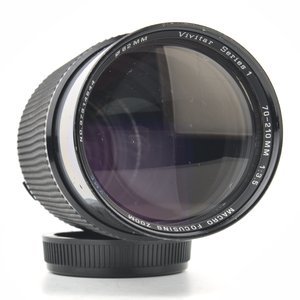
- Covers a popular focal range.
- Excellent for portrait or wildlife photography.
- A rare time when a third-party lens is the best.
See current price and more information on:
Alternative Zoom Lenses
Unfortunately, shorter focal range zooms have problems making them a bad choice to use with the Nikon FM10. Age along with wear and tear has resulted in many Nikon zooms to end up being practically useless.
The only lens I would recommend searching for is the Vivitar Series 1 VMC 35-85mm f/2.8 (Also found on KEH). Be warned, it can be difficult to find.
Vintage Zoom Lens Problems
The lens that could have been the best choice, the Nikon Zoom-Nikkor 35-105mm f/3.5-4.5, is sadly, a push-pull zoom. Instead of a zoom ring that turns, the focus ring is pushed or pulled to control the lens zoom range.
The grease in just about all of these lenses has broken down to the stage where the zoom mechanism is unable to hold itself in position. Because of this, the lens will have tiny changes in focal length when you attempt to focus. This will be made worse if the lens is not parallel to the ground.
Nikon Macro Lenses
Komine manufactured the two mentioned macro lenses in Japan. The lenses were sold under assorted brand names. Quantaray, Spiratone, Rokunar, Elicar, and Panagor are brands that also sold the lenses.
There is a Vivitar 90mm f/2.8 Macro Lens Review and a Vivitar 55mm f/2.8 Macro Lens Review.
For capturing images at life-size magnification, the 90mm lens will be the superior choice since it has a larger working distance.
The 55mm macro lens is great for table-top and close-up photography.
Vivitar 90mm f/2.8
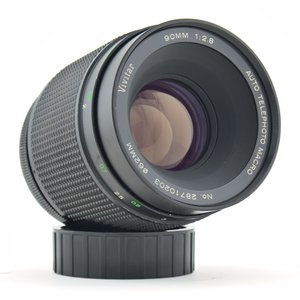
- My favorite vintage macro lens.
- Available in lots of different lens mounts.
- Outstanding value.
See current price and more information on:
Vivitar 55mm f/2.8 Macro Lens
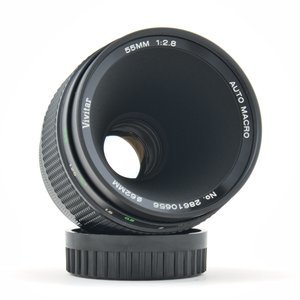
- My second favorite vintage macro lens.
- An outstanding choice for close-up photography.
- Can reach 1:1 magnification without needing an extension tube.
See current price and more information on:
Alternative Macro Lenses
- Nikon Micro Nikkor 55mm f/3.5
- Lester A Dine 105mm f/2.8
- Micro Nikkor 105mm f/2.8
Used Nikon Camera Lens Prices
Camera lens prices change all the time depending on availability and interest in older lenses. Over the past several years, film photography was going through an increase in interest, which has caused prices to increase.
Economic conditions are constantly changing, and unexpected developments can result in changes in prices. However, the difference in lens prices should stay similar.
Checking several sites is the savvy way to get accurate pricing. If you are lucky enough to come across a good deal, snap it up, because the best deals do not last very long.
What Lens Mount Does the Nikon FM10 Use?
The Nikon FM10 has an Nikon F-mount. The F-mount has been in use since 1959. Changes have been made over time to add metering information, autofocus, electronically controlled apertures, and CPU contacts.
For the FM10, you want manual focus lenses that are either Ai or Ai-S. The meter coupling ridge on those lenses enables the camera to meter accurately.
For a complete explanation of the differences between lenses, this page explains everything you should know Nikon F-mount lens and camera compatibility.
Standard Lens Cap Size
The standard lens cap and filter ring thread size for the majority of vintage manual focus F-mount lenses is 52mm. Keep in mind, lenses with large front elements will need larger lens caps and filters.
The advantage of having a standardized filter thread size is that you only need to have a single set of lens filters.
Non Ai vs Ai & Ai-S Lenses
A Meter Coupling Prong was used on early Nikon cameras. The Nikon FM10 uses a Meter Coupling Ridge.
Some lenses contain both styles of meter coupling as they were made around the time Nikon transitioned to The Ai lens design.
Non-Ai lenses will cause damage to your FM10 if you attempt to put one on the camera.
More Nikon FM10 Resources
There is no more info on the best Nikon FM10 lenses. When new information is added to the site, links will be here.